Observing an interaction between two cats is an interesting experience for sure.
Chances are your two cats won’t be the best of friends at the beginning of their relationship. But, with time, they could start tolerating and even liking each other.
You are viewing: Why Does My Cat Bite My Other Cat’s Neck
Still, you could witness some of their behaviors that will leave you surprised. One of them is the two cats biting each other’s neck.
Why does this occur? Why do cats bite each other’s necks? Is this a fight between them or a harmless behavior?
There are nine common explanations for these bites in the feline world. Let’s explore them and see whether you should intervene.
1. Overstimulation
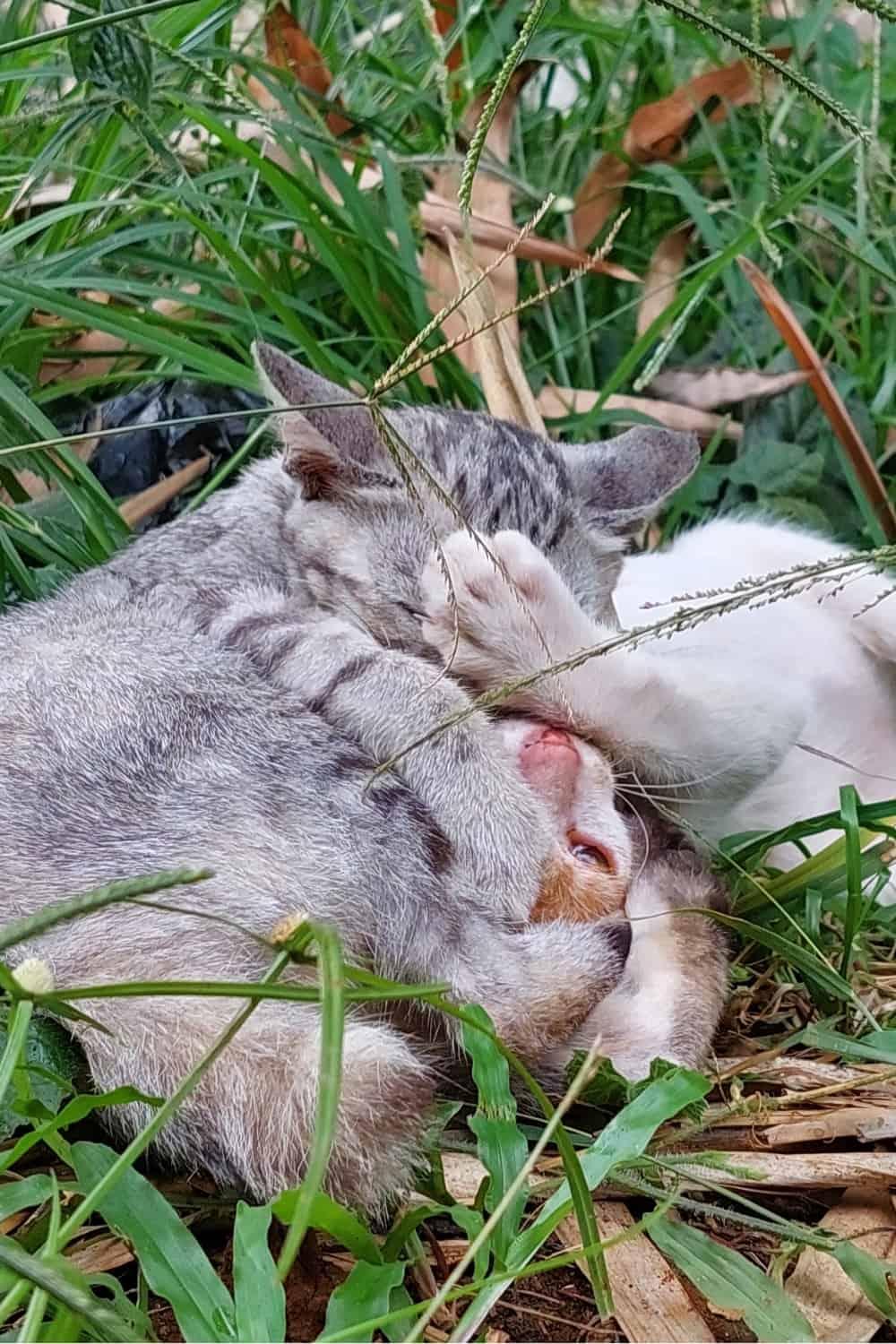
Cats spend a good deal of their time grooming their coats. Some of them could also groom each other. This usually happens with felines who live in the same household, and who like each other’s presence.
In these situations, grooming is their way of social bonding. One of your cats may become overwhelmed by the attention of the other and feel the need to signal a halt by biting the grooming cat’s neck.
This is called overstimulation in cats. You can notice this in your own interaction with your furry friend. For instance, she can let you pet her for a while and look like she’s enjoying it. Then, all of a sudden, she could grab your arm and bite you.
These aren’t harsh bites, but only your cat’s way of telling you to stop petting her. The same can happen between your two cats during their mutual grooming.
This is a perfectly normal feline behavior, and nothing to be worried about.
2. Playing
Sometimes cats can bite each other just as a part of their playing behavior. These should be gentle bites, without provoking blood and wounds.
This is also a normal behavior, but you should be able to differentiate between cats’ playing and aggression.
Hill’s Pet points out some common signs that a cat is aggressive, and not just playing. They are the following:
• Arched back
• Stiff-legged posture
• Striking or swatting
• Flattened ears
• Fluffed fur and tail
If you notice these signs in your cats, it’s time you intervene and stop their fight. You should do this by clapping your hands loudly or distracting them.
Distraction can be done by giving them some toys to redirect their attention to something else.
3. Mating Behavior
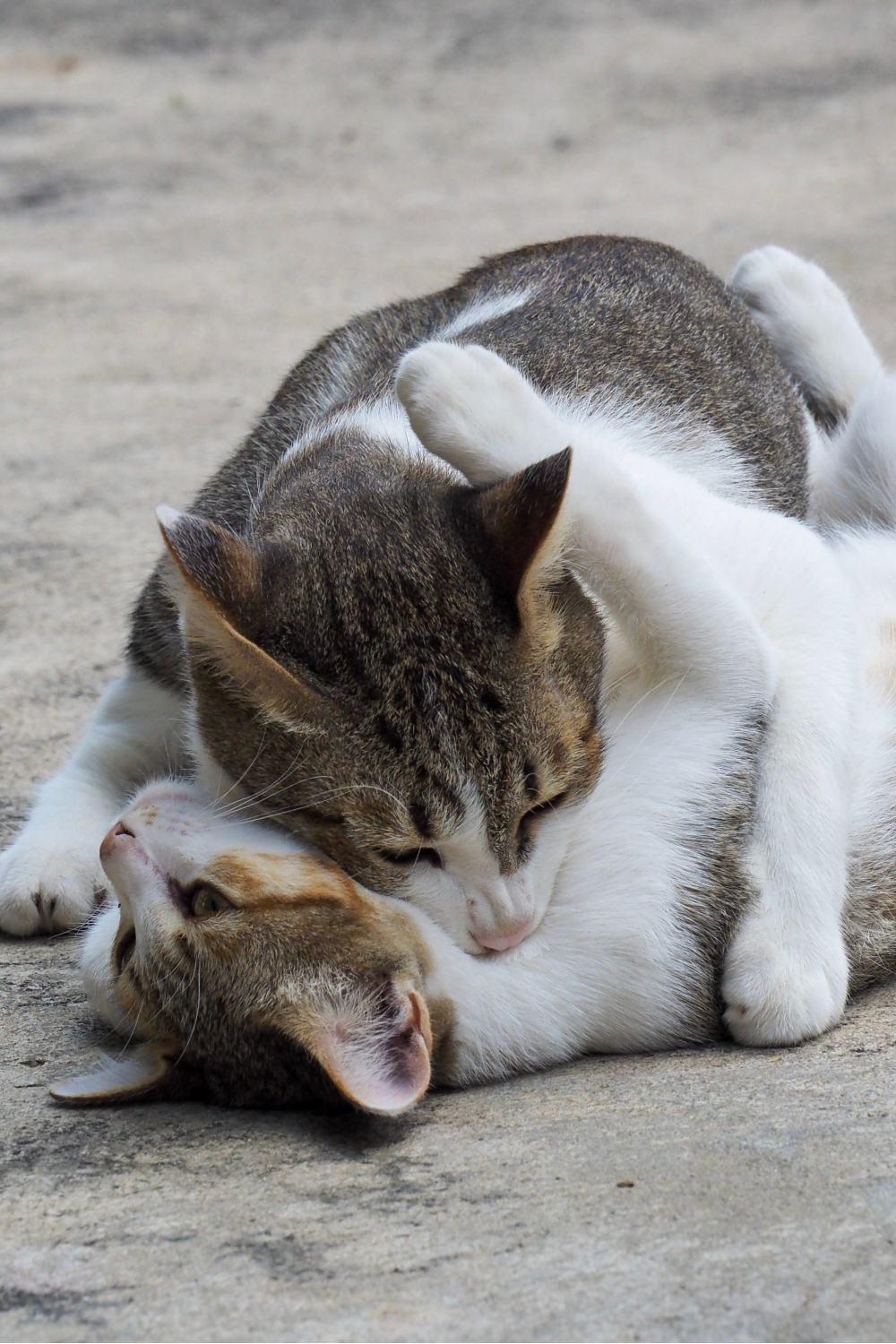
Cats biting each other’s necks can also be a part of their mating behavior.
There are some expected behaviors when cats are mating. One of them is a female cat screaming during intercourse. This happens because male cats have barbed reproductive organs, causing mating to be painful for females.
Another behavior is seen in male cats and it includes them biting a female’s cat neck during mating.
This action is a form of sexual aggression and serves as a way for the male to keep the female from escaping.
The only way to prevent your cats from mating is to have them spayed/neutered. If you would like to stop seeing this sexual aggression in cats, it would be best to consult a vet on sterilization.
It’s recommended to sterilize cats before they reach five months of age. However, you should know that it’s never too late to spay them, just as long as they’re healthy.
Read more : Why Did Damian Lewis Leave Homeland
Sterilization is a routine procedure nowadays. A cat should be fully recovered within a few days after the procedure.
4. Showing Dominance
A cat could bite another cat’s neck to express dominance.
This type of aggression is especially common when a new pet arrives in a household. Your resident cat sees this as a threat to its territory. Therefore, it wants to assert its dominance over the new cat.
Of course, you shouldn’t permit any kind of aggressive behavior between your two pets. Spruce Pets suggests that redirecting them to a toy can be a useful technique here.
Make sure their food and water bowls are in different places in your home. This way, you’ll decrease the chance of dominant feline behavior caused by competition for food.
Also, multiple litter boxes are necessary to prevent your pets from interrupting each other while defecating.
If your cat’s dominant behavior doesn’t appear to subside, the ultimate step to take is consulting a veterinarian.
5. Their Natural Hunting Instincts
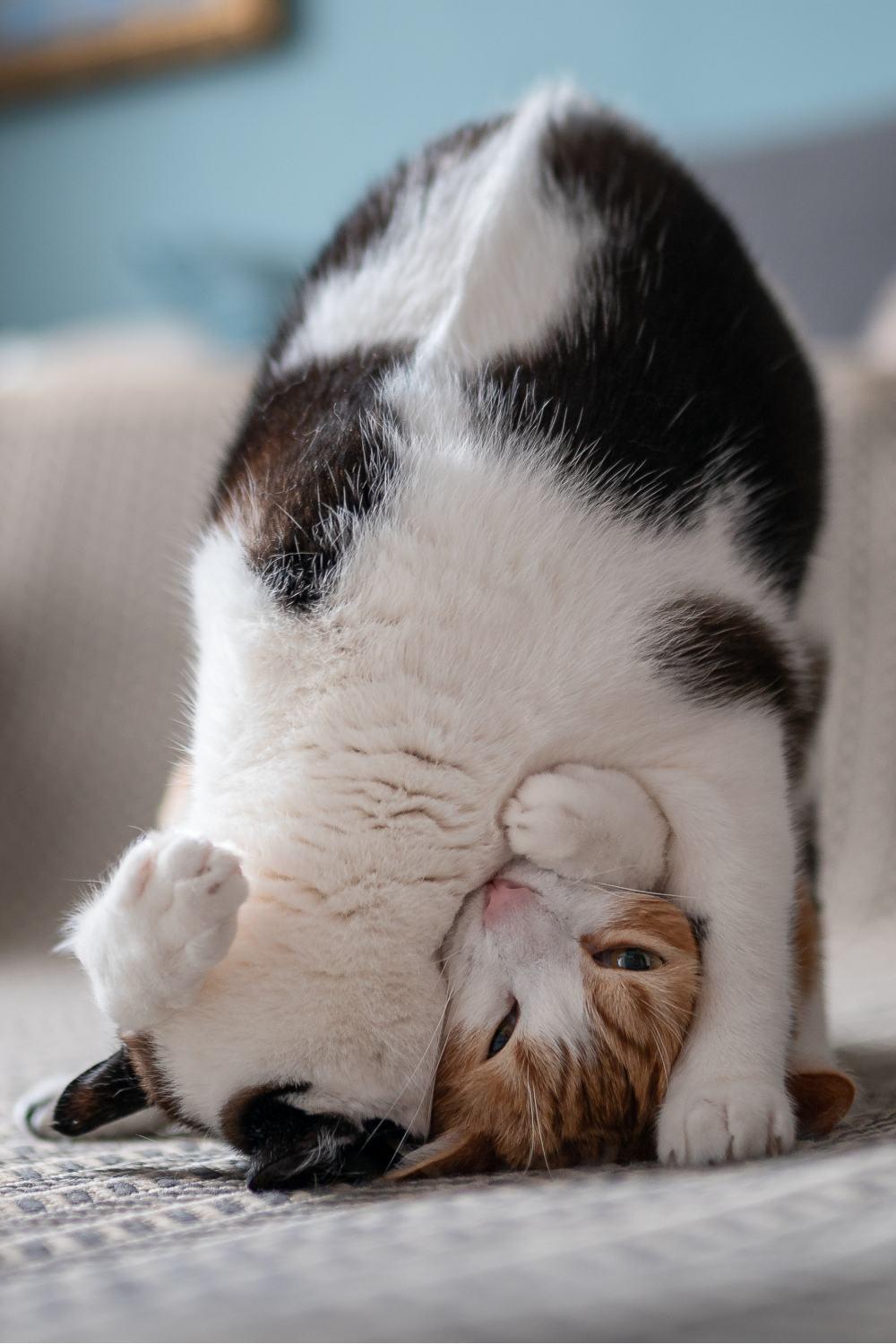
Hunting is a very important part of a cat’s nature. Our domesticated cats don’t need to hunt their prey to have food, since we provide it for them.
However, they still need to hunt. This is a great stimulation for them, and something they really enjoy doing. Even cats that spend all of their time indoors are perfectly able to hunt.
Your cat biting another cat’s neck could be a part of their natural hunting instincts. When they hunt, cats are likely to grab the neck of their prey since this is a vulnerable part of their bodies.
This isn’t something you’ll enjoy seeing in your house cats. But, it’s important you give your cat actual opportunities to hunt.
You don’t even have to let it go outside to have this pleasure. There are excellent toy mice and string toys designed to allow cats to express their hunting instincts without resorting to biting other cats’ necks.
6. Stress
Noticing a sudden aggression in the form of biting other cats’ necks in normally gentle cats could be a sign of stress in her.
The presence of other pets, new smells, loud noises, or a change in their home can cause stress in cats. When a cat finds herself in this kind of situation, without an escape route, she could exhibit aggression, according to the Weddington Animal Hospital.
Stress is a serious emotion that you shouldn’t ignore in your pet. Some other signs that could occur besides aggression are the following:
• Avoiding the litter box
• Hiding behavior
• Overeating or eating less than usual
• Scratching the furniture
• Excessive vocalization
• Less tolerance towards people
You should try to figure out the exact cause of stress in your cat. The next step should be eliminating it from its surroundings.
It’s also a good idea to consult a veterinarian or a pet behavior specialist on sudden aggression caused by stress in cats. This especially goes with cats that don’t seem to stop this behavior for a longer period of time.
7. Territorial Behavior
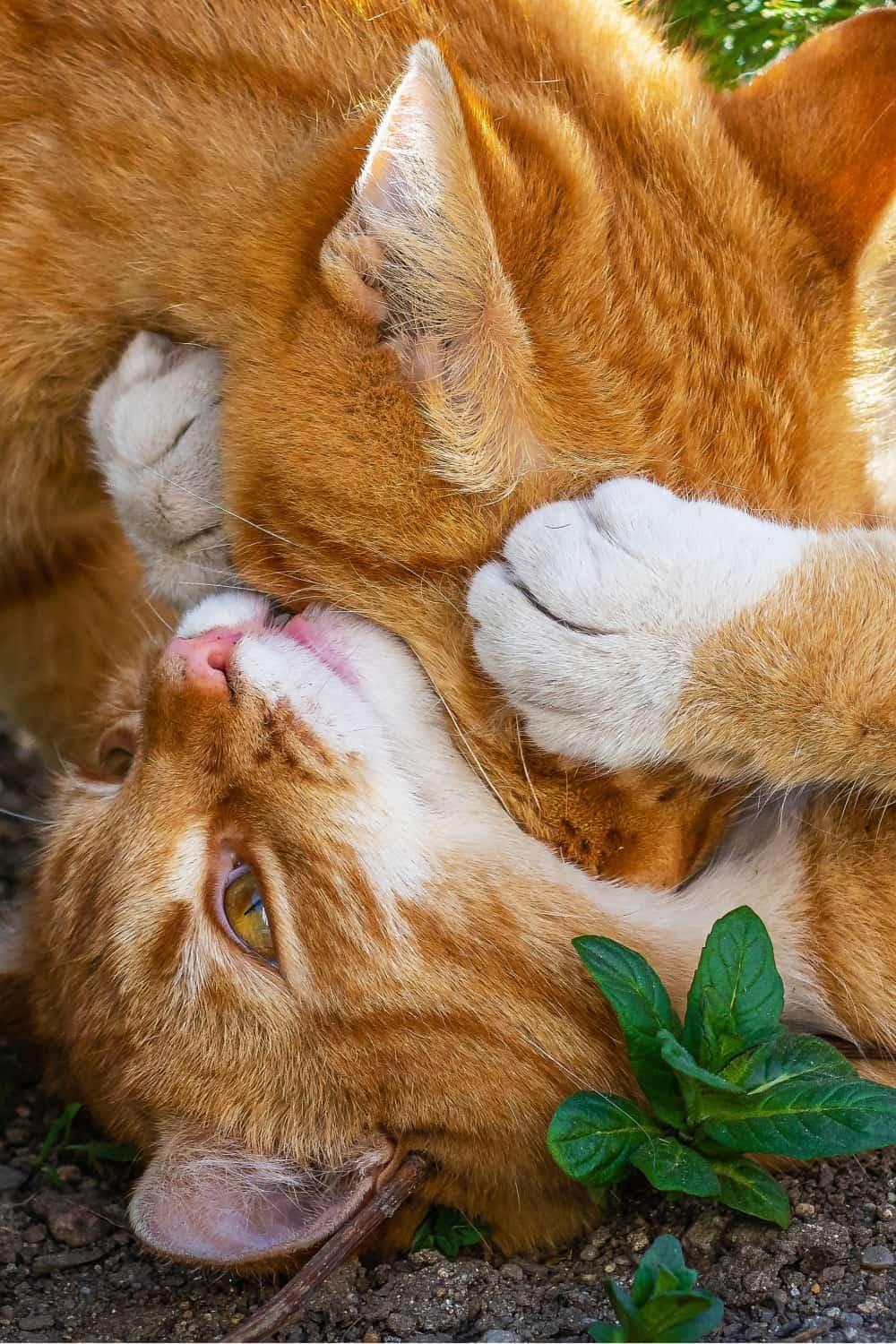
Just like they can be dominant, cats are also very likely to be territorial. They like to have a certain area they mark as their own and disapprove of other cats invading their personal space.
Getting a furry companion is a situation that increases the chances of territorial behavior in felines. Therefore, owners of multiple cats could see their cats biting each other’s necks.
This can be seen as a sign that they don’t like each other. It’s also probably true, especially at the beginning of their relationship.
However, with the right approach, a proper introduction, and considerate treatment, your two cats can learn to tolerate each other’s company.
Read more : Why Is It So Foggy
You need to make sure that both of them have enough space and items inside your home. They shouldn’t, in any way, invade the other cat’s territory.
Remember to divide your attention equally between your two feline friends. This way, you’ll decrease the possibility of them attacking each other.
8. Lack Of Socialization
Another potential reason for a cat’s tendency to bite other cat’s necks is its lack of socialization.
Young kittens learn about social behaviors from their mothers and littermates. They learn how to groom each other and how to play in a proper way. If they get separated from them early, this can reflect on their behavior in adulthood.
It’s possible that cats haven’t learned the way they are supposed to interact with their feline counterparts. This can make living with them annoying, and even worrying, if they tend to show aggressive behavior often.
Lack of socialization can cause some cats to become fearful and anxious. This can lead to timid behavior around people and other cats.
On the other hand, it can also cause some cats to show unwanted aggressive outbursts.
You shouldn’t panic here, since there are still some things you can do. Even adult cats can be taught proper socialization.
Positive reinforcement is crucial here, so, you should first teach your cat how to listen to your commands. Using tasty treats is the most effective way to do this.
Make sure you reward your pet every time it shows nice behavior towards other cats. The most important thing here is for it to realize biting is highly undesirable behavior.
9. Redirected Aggression
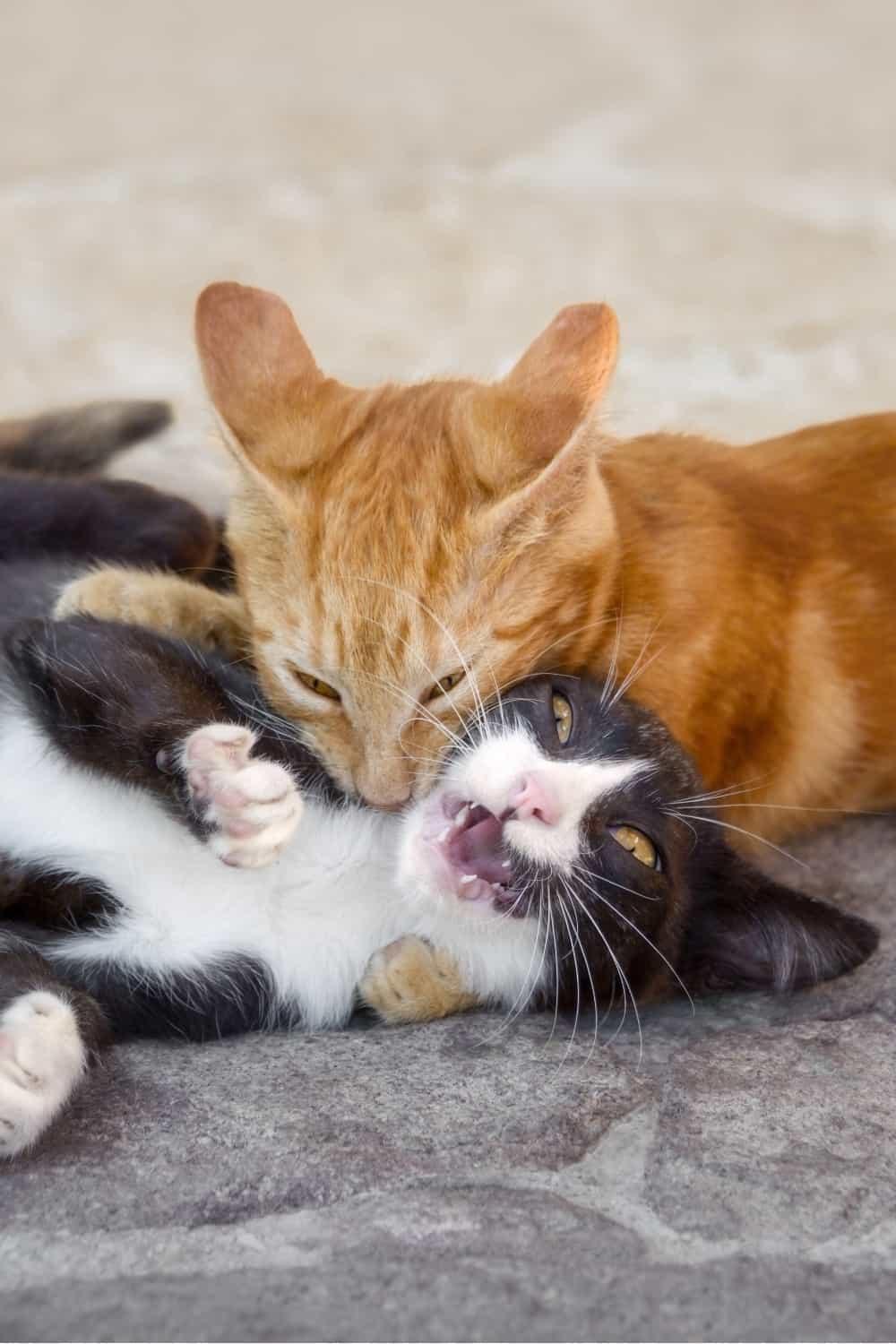
Finally, cats biting each other’s necks can be a form of redirected aggression.
Marta Amat and Xavier Manteca [1] describe this type of aggression as situations when the aversive stimulus isn’t accessible, and then the cat attacks an alternative stimulus.
So, if a cat is unable to respond directly to a perceived threat or annoyance, it may redirect its aggression towards another cat.
Some examples of causes of such aggression are loud noises or seeing a stray cat through a window.
For instance, your cat is peacefully enjoying the sunlight on its favorite windowsill. Suddenly, it sees a stray cat outside in its yard. The window isn’t open so it can’t get to that cat and show it who’s the boss around your house.
Still, it could show aggressive body posture and start to growl at the stray cat outside. As it won’t be able to get to it, it could bite the other cat’s neck in its household instead.
Simply, this cat was available to it at the moment. Some cats can also show aggression to their owners in these situations.
The solution here should be rather simple. Just discover what’s the cause of redirected aggression and then remove this stimulus from your cat’s sight.
Final Thoughts
Why do cats bite each other’s necks?
There isn’t a single, unique answer to this question. This could be a territorial behavior or a way for cats to show dominance.
Two cats could just be playing and biting each other gently, without causing any wounds. It can also be a result of overstimulation in felines.
Sometimes it’s a part of their mating behavior, and, in some cases, it could show as a result of a lack of socialization.
This will sometimes require you to intervene and stop aggression towards your two cats.
If you have any worries about your cats being overly aggressive, you can always consult a vet or a pet behavioral specialist.
References:
[1] Amat M, Manteca X. Common feline problem behaviors: Owner-directed aggression. Journal of Feline Medicine and Surgery. 2019;21(3):245-255. DOI, Retrieved September 24, 2023.
Read Next: Why Does My Cat Lick Then Bite Me?
Source: https://t-tees.com
Category: WHY
